Prolonged CME effects spark G1 Minor geomagnetic storm
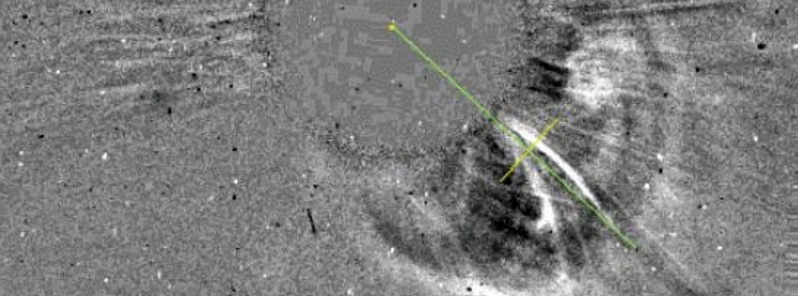
Prolonged effects of a partial-halo CME impact, produced by the filament eruption just of center disk late on January 14, 2016, is causing a G1 Minor geomagnetic storm on January 20, 2016. The CME reached our planet just before 21:00 UTC on January 18. Geomagnetic K-index of 4 was first reached at 01:06 UTC on January 19.
During the last 24 hours, solar wind and interplanetary magnetic field (IMF) parameters indicated continued CME effects, SWPC reported at 12:30 UTC today. Wind speeds started increasing about 00:30 UTC on January 20 and reached just over 400 km/s. The Bz component of the magnetic field turned southward at 03:30 UTC.
Geomagnetic K-index of 5 was reached at 17:59 UTC.
A trend towards ambient level solar wind is expected by January 21 as CME effects dissipate.
However, a negative polarity coronal hole high speed stream (CH HSS) is expected to rotate into a geoeffective position and provide another enhancement in the solar wind and IMF on January 22.
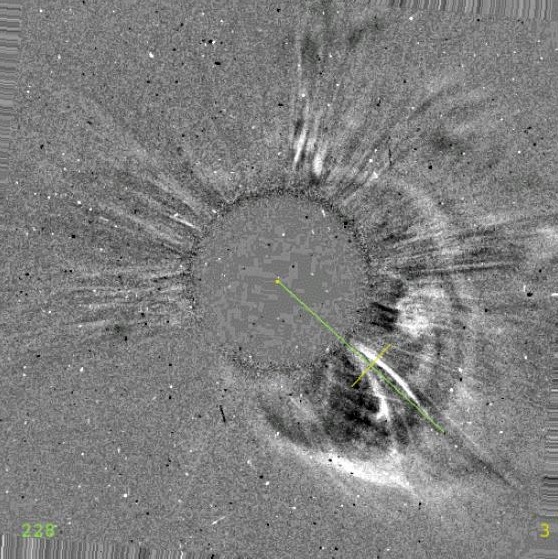
Image credit: NASA/ESA SOHO/LASCO
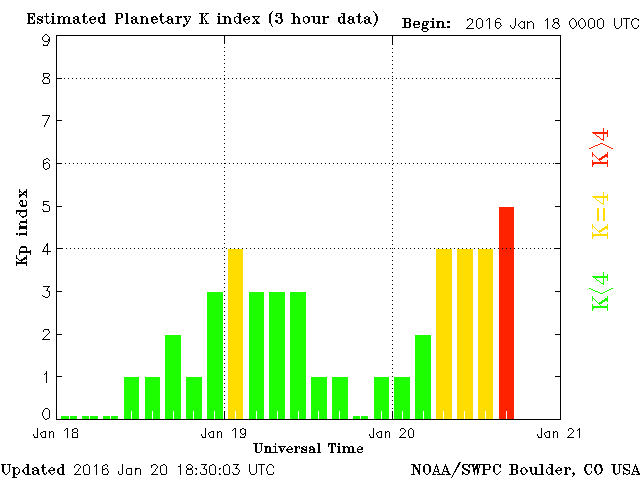
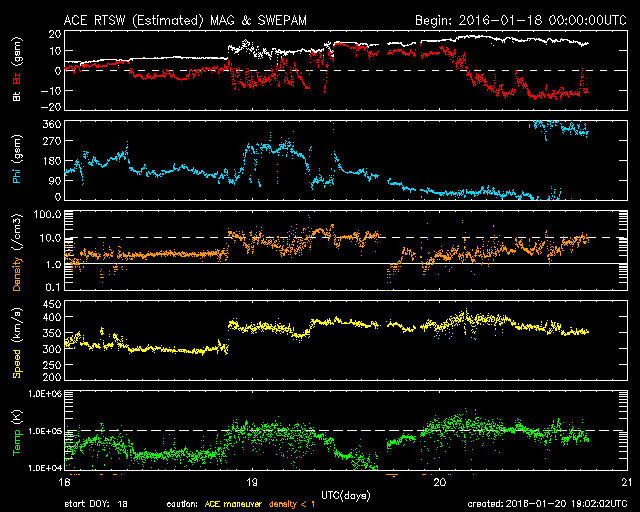
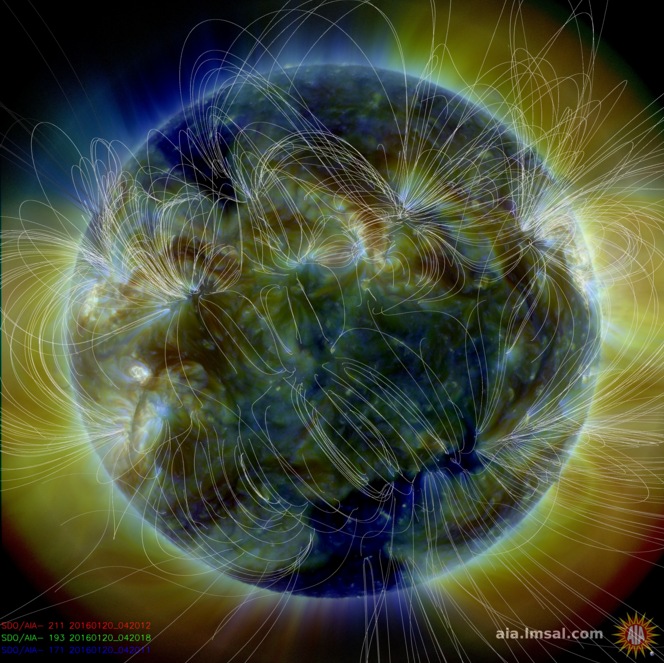
SWPC alerts
Space Weather Message Code: ALTK04
Serial Number: 1849
Issue Time: 2016 Jan 19 0106 UTC
ALERT: Geomagnetic K-index of 4
Threshold Reached: 2016 Jan 19 0106 UTC
Synoptic Period: 0000-0300 UTC
Active Warning: Yes
NOAA Space Weather Scale descriptions can be found at
www.swpc.noaa.gov/noaa-scales-explanation
Potential Impacts: Area of impact primarily poleward of 65 degrees Geomagnetic Latitude.
Induced Currents – Weak power grid fluctuations can occur.
Aurora – Aurora may be visible at high latitudes such as Canada and Alaska.
***
Space Weather Message Code: ALTK05
Serial Number: 917
Issue Time: 2016 Jan 20 1802 UTC
ALERT: Geomagnetic K-index of 5
Threshold Reached: 2016 Jan 20 1759 UTC
Synoptic Period: 1500-1800 UTC
Active Warning: Yes
NOAA Scale: G1 – Minor
NOAA Space Weather Scale descriptions can be found at
www.swpc.noaa.gov/noaa-scales-explanation
Potential Impacts: Area of impact primarily poleward of 60 degrees Geomagnetic Latitude.
Induced Currents – Weak power grid fluctuations can occur.
Spacecraft – Minor impact on satellite operations possible.
Aurora – Aurora may be visible at high latitudes, i.e., northern tier of the U.S. such as northern Michigan and Maine.
Featured image credit: ESA/NASA SOHO/LASCO

Commenting rules and guidelines
We value the thoughts and opinions of our readers and welcome healthy discussions on our website. In order to maintain a respectful and positive community, we ask that all commenters follow these rules.